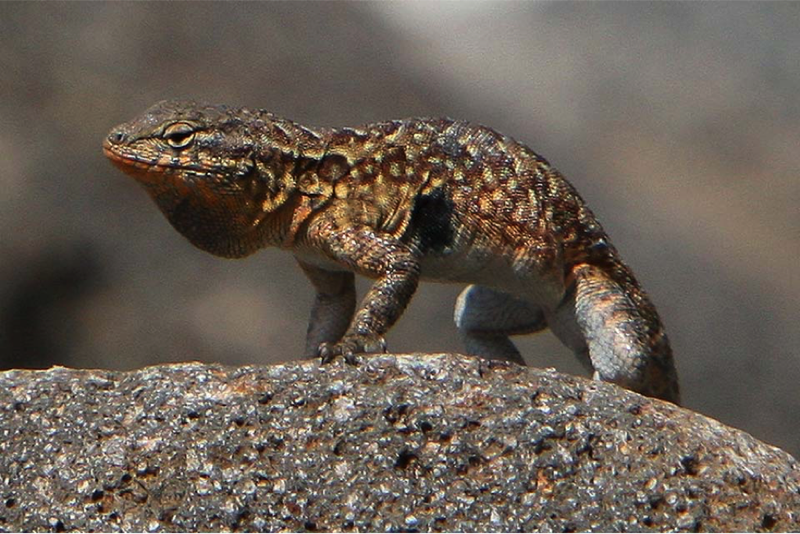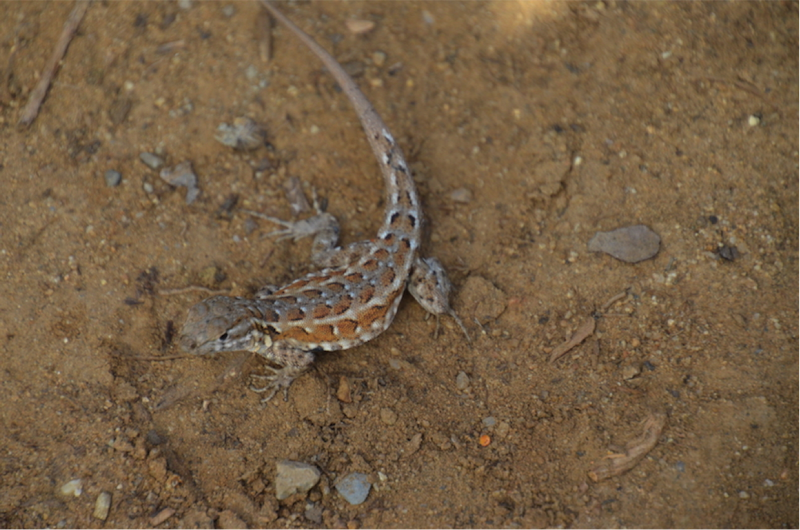The western side-blotched lizard (Uta stansburinia) is a common sight in Southern California and most of the West. While exploring Cabrillo National Monument, you have likely seen this cold-blooded animal basking in the sun or scurrying along the shrubs. These lizards are small, usually 1.5 – 2.5 inches long, and have a mottled black, brown, white, and yellow coloration. True to their name, they have a dark splotch of color on either side near their front legs. Male side-blotched lizards are more colorful than females, with blue specks on their faces and blue, yellow, or orange throats. At first glance, there’s nothing special about these lizards, and in fact often get confused with the Great Basin fence lizard, another common species in this area. However, the males have evolved a unique mating strategy.

NPS Photo/Channel Islands
There are many examples of different mating strategies throughout the animal kingdom, all of which have evolved over time in favor of high reproductive success. Males often compete with one another for territory and access to females to mate with. For example, sometimes the most beautiful male wins, while sometimes it’s the one who is most vocal. In the case of the western side-blotched lizard, males have adopted three different mating strategies that correlate with the color of their throat.
Blue, yellow, and orange male side-blotched lizards compete with one another in a rock-paper-scissors dynamic. The orange-throated males are the largest and produce the most testosterone. This makes them aggressive fighters that bully blue-throated lizards away from females. Yellow-throated males, however, produce little testosterone and are smaller. They mimic females, allowing them to sneak in and whisk females away from orange males. The medium-sized blue-throated males are neither aggressive nor sneaky. Blue males work together and form strong pair-bonds with a female, making it hard for yellow-throated males to sneak in and break them apart.

NPS Photo/Warren Tam
In summary, orange beats blue, blue beats yellow, and yellow beats orange. Each strategy has its own strengths and weaknesses, allowing all three color morphs to exist together in nature. If one morphology somehow loses its advantage over another, evolution will remove that morph from the population. Will the aggressive orange-throated males one day win out over the sneaky yellow-throats? Will the sneaky yellows succeed in breaking apart the cooperative blue-throats? Will the three mating strategies exist in harmony forever? Only time may tell.
To Learn More Visit:
https://www.nps.gov/chis/learn/nature/side-blotched-lizard.htm
http://www.smithsonianmag.com/science-nature/the-lizards-that-live-rock-paper-scissors-118219795/
